How to drain a dehumidifier to the outside?
3 Key Takeaways:
🚀 Draining a dehumidifier is necessary at regular intervals, regardless of the model or unit capacity.
🚀 There are several methods for draining a dehumidifier, including gravity drain, condensate pump, standard garden hose connected to the drain port, or PVC pipe.
🚀 If your dehumidifier is not draining through a hose, there could be several reasons, including an improperly routed drain line, the end of the hose resting in standing water.
Our expert tips on how to drain a dehumidifier.
After air conditioners, dehumidifiers are becoming the next big home appliance that brings not just comfort but also improves the air quality in a household. Although every homeowner is fully aware of the damaging effects of excess moisture content in their home and the need to have water removal from the air carried out to maintain the ideal humidity levels, there is something about dehumidifiers that they find taxing- water drainage.
It is important that every owner equips themselves with the knowledge required to know different methods by which water drainage system works in a dehumidifier. Let us know more about the various hassle-free methods on ‘How to drain a dehumidifier to the outside?‘.
Do you have to drain a dehumidifier?
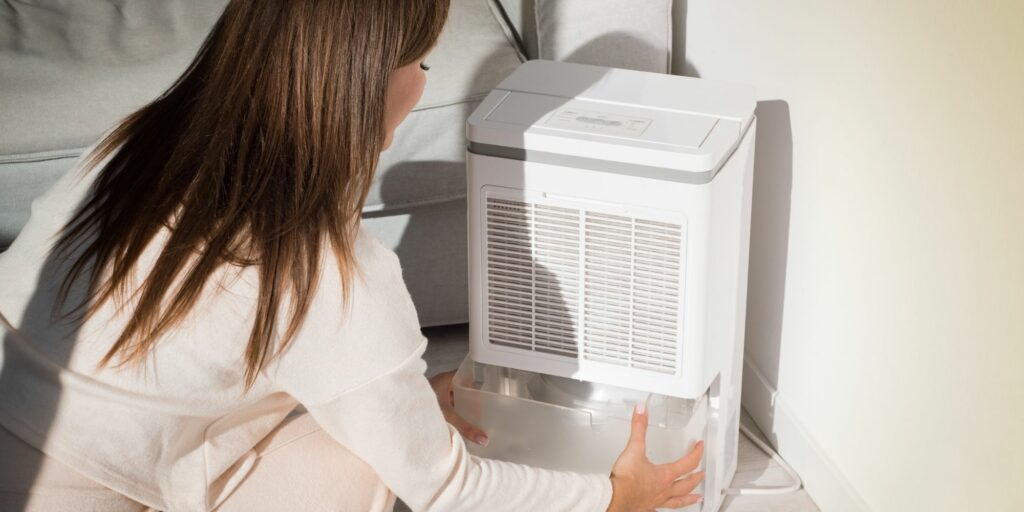
Yes, you have to drain a dehumidifier at regular intervals. The rule is the same for all models with different unit capacities, you have to have a dehumidifier water removal option. The excess moisture content that is absorbed or extracted from the air gets converted into liquid water by the unit. This water drips into a reservoir.
Now, the capacity of this bucket or reservoir and the method by which the device is going to be drained to the outside will also vary between models. It could be either by a gravity drain, condensate pump, standard garden hose connected to the drain port, PVC pipe, etc.
Draining a dehumidifier can be done in more than one way and you can google all about them, to learn which drainage settings option will work the best for your household.
Where can I drain my dehumidifier?
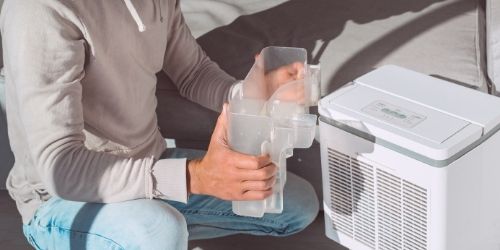
Draining your dehumidifier manually is simple. You can empty the water bucket from the dehumidifier and empty it into a corner drain or into a laundry tray drain. You can choose which works best for you based on the unit and location of your dehumidifier.
Why doesn’t my dehumidifier drain through a hose?
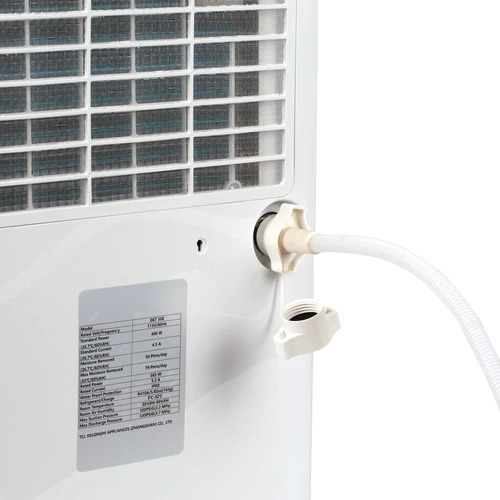
There could be several reasons why your dehumidifier does not drain through a hose. Check which one among these it could be…
1. As far as the gravity drain method is concerned, the drainage hose must run in a downhill manner. It must run all the way to the drain port or sink or floor drain, free from any bends. If the drain line has been routed uphill, your dehumidifier water removal option is not going to work.
2. Double-check how the drain hose has been set up. If drain hoses have been routed into the drain (like a standpipe or down into a standard sink), you must always ensure that the end of the hose is not resting in standing water. As the drain hose collects water from the device and empties it into the sink, there is a good chance that the end of the hose has been left to rest into the standing water. This can turn out to be a problem in successful drainage since the pressure created by the water at the hose’s end will interfere with the draining.
3. Any hole, leak, bend, or clogs in the dehumidifier drain hose are other reasons why your appliance does not drain water.
4. Drain hoses that do not have their adapters installed properly will also malfunction. They might end up draining the water into the bucket or they may not drain at all. Ensure that the power cord and adapter are set up correctly.
5. For an appliance that has a built-in pump model, the pump drain set up must be checked. You will find that at the back of the unit there is a drain port where the pump drain hose is attached. At this connection, there is a sensor meant to detect if the pump drain hose connection is proper. If the sensor is not engaged accurately, there is going to be a problem in activating the pump. If the pump drain hose attachment is connected properly, it will ‘Click’ into place and activate the pump for the seamless dehumidifier water removal option.
6. If there is an extra portion of the drainage hose or the garden hose that can be cut off at the end to prevent bending of the outlet, feel free to do so.
7. Regardless of whether or not you use the reservoir drain method, make sure that the water collection bucket is empty if the full bucket indicator is on. The indicator is a float switch method that will shut off the unit when the bucket is full. Make sure that the indicator is not stuck in the FULL position, which can also cause problems with drainage. If the empty bucket is not reinstalled back into the unit correctly that will also interfere with drainage.
How do I get my dehumidifier to drain through the hose? (5 Simple Steps)?
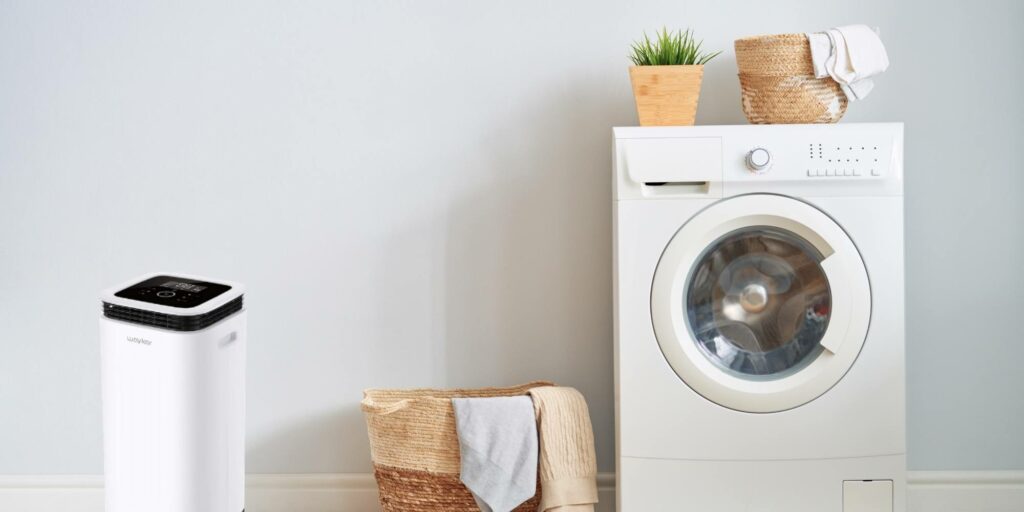
Dehumidifiers that do not come with a built-in pump are drained using a drain hose by the gravity drain method. The dehumidifier drain hose is connected with the drain hose outlet or the drain port. If your appliance came without a hose, you can simply use any standard garden hose as a substitute. However, you have to check if it fits into the dehumidifier’s drain port with perfection.
Once this is done, if you have a floor drain hole you can just direct the other end of the hose, into the drain hole for hassle-free drainage. If your home does not have a floor drain hole facility, you can always choose to drain the water outside through a window or sink. Here are some simple steps on draining a dehumidifier through the hose.
1. As the first step make sure that the dehumidifier is located in the place you have carefully assigned for it. Be it on the floor, set up against the wall, or on a table. The device must be securely installed.
2. Always remember when it comes to draining a dehumidifier using the gravity method, the device must be at an elevated position, at least 6 inches above the point of drainage. The drainage location must be lower than the dehumidifier.
3. Ensure the power cord is connected to the power outlet without any hindrance.
4. Now, connect the hose to the dehumidifier’s drain point and lead the other end of the hose to the drainage location.
5. Switch on the device to being its operation of extracting moisture from the air.
How do you unclog a dehumidifier?
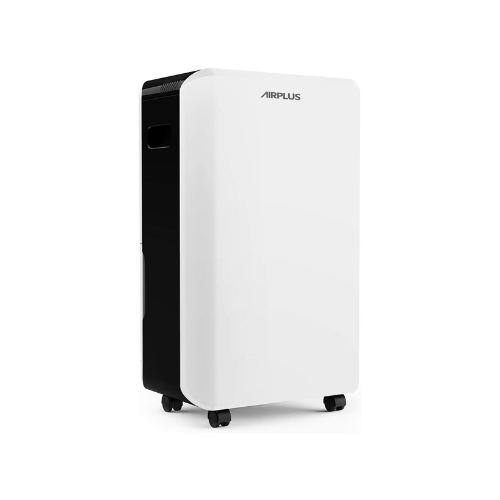
Unclogging any blocks that could be in the drain hose is simple. This is something that most people manage to do by themselves at home by following just a couple of steps. If you think you cannot manage at home, you always have the option to take professional help.
1. Turn off the dehumidifier and have it unplugged.
2. Take it down from the place it has been installed.
3. Wipe down the outside of the dehumidifier, to remove the allergens and dust collected on the body.
4. Remove the water bucket, scrub it gently in every place you can get into. This will make sure it is completely free from all traces of mold-causing articles.
5. The air filter is the most important part of the dehumidifier. As the moisture from the air is being removed, the air is also being filtered. This keeps your environment free from allergies, mold spores, mildew, dust mites, and other allergens. Most people clean out the air filter within their air conditioner at home using a small amount of soapy water and mild scrubbing. The same method works well for air filters within dehumidifiers. This will remove any particles that are clogging the filter.
6. To clean the drain hose and remove any clogging, you can vacuum it out, use a baby bottle brush, or pipe cleaners. This assures that every place inside the drain is clog-free.
Best Dehumidifier with Drain Hose and Pump:
hOmeLabs 50 Pint Dehumidifier
Keep the humidity levels in your home under check with the hOmeLabs Dehumidifier. Most people opt for his dehumidifier due to its large capacity when it comes to area coverage. It can remove 50 pints of moisture from the air, covering an area of 4,000 square feet. The LED display has a built-in humidity sensor that shows you the current humidity level and also allows you to set your ideal level for automatic moisture removal and control.
The other attractive features of this Energy Star certified dehumidifier are Auto- Defrost, Auto-Restart, Casters, LED Display to indicates Humidistat and settings, Fan Speed, Timer, Filter Alert, and more. As far as water drainage goes with this model, you have a Built-In pump that gives you continuous upward water drainage. This can be directed out of the basement window, into a sink, or any location that best suits your home and comfort.
Pros and Cons of hOmeLabs Dehumidifier
» Excellent quality of the material
» User friendly
» Durable design and performance
FAQ Section
1. What size hose does a dehumidifier use?
The size of the hose to use for your dehumidifier is half-inch inside. This should be sufficient and works well across all units.
2. What is the difference between a dehumidifier with a pump and without?
The difference between a dehumidifier with a pump and without a pump is easy. In dehumidifiers with condensate pumps, the unit operates automatically and the moisture that is being removed from the air can be pumped out vertically. In those without a pump, the moisture extracted is stored as water inside a reservoir or bucket and it has to be emptied out manually.
2. Where do I pump my dehumidifier water?
Draining a dehumidifier has different options, depending on the particular model. For example, condensate pump, gravity drainage through the drain hose, floor drain, drainage out through a window or into a sink, and water collection bucket.
Wrapping Up
With this, we have reached the end of the post on ‘How to drain a dehumidifier to the outside?’. Hope the article answers all your queries on the different draining methods that dehumidifiers have, their benefits, and steps to remember for hassle-free drainage. Let us know how do you drain your dehumidifier and how it suits your home.
